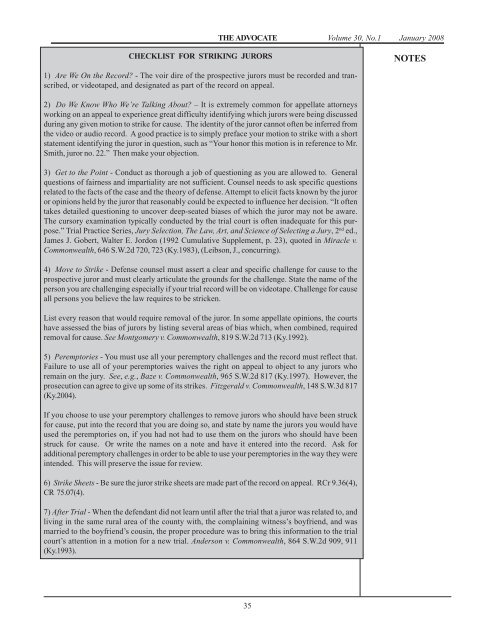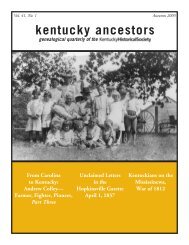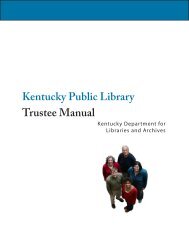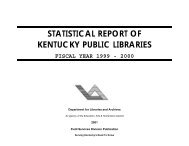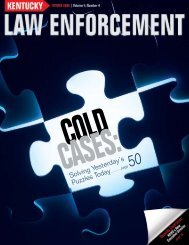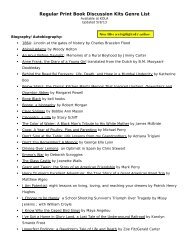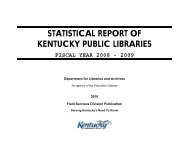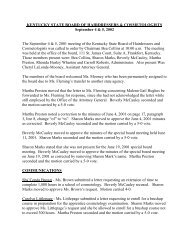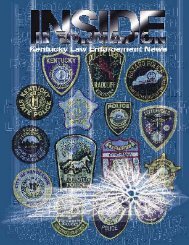Jan08 Advo.pmd - e-archives Home
Jan08 Advo.pmd - e-archives Home
Jan08 Advo.pmd - e-archives Home
You also want an ePaper? Increase the reach of your titles
YUMPU automatically turns print PDFs into web optimized ePapers that Google loves.
CHECKLIST FOR STRIKING JURORS<br />
THE ADVOCATE Volume 30, No.1 January 2008<br />
1) Are We On the Record? - The voir dire of the prospective jurors must be recorded and transcribed,<br />
or videotaped, and designated as part of the record on appeal.<br />
2) Do We Know Who We’re Talking About? – It is extremely common for appellate attorneys<br />
working on an appeal to experience great difficulty identifying which jurors were being discussed<br />
during any given motion to strike for cause. The identity of the juror cannot often be inferred from<br />
the video or audio record. A good practice is to simply preface your motion to strike with a short<br />
statement identifying the juror in question, such as “Your honor this motion is in reference to Mr.<br />
Smith, juror no. 22.” Then make your objection.<br />
3) Get to the Point - Conduct as thorough a job of questioning as you are allowed to. General<br />
questions of fairness and impartiality are not sufficient. Counsel needs to ask specific questions<br />
related to the facts of the case and the theory of defense. Attempt to elicit facts known by the juror<br />
or opinions held by the juror that reasonably could be expected to influence her decision. “It often<br />
takes detailed questioning to uncover deep-seated biases of which the juror may not be aware.<br />
The cursory examination typically conducted by the trial court is often inadequate for this purpose.”<br />
Trial Practice Series, Jury Selection, The Law, Art, and Science of Selecting a Jury, 2 nd ed.,<br />
James J. Gobert, Walter E. Jordon (1992 Cumulative Supplement, p. 23), quoted in Miracle v.<br />
Commonwealth, 646 S.W.2d 720, 723 (Ky.1983), (Leibson, J., concurring).<br />
4) Move to Strike - Defense counsel must assert a clear and specific challenge for cause to the<br />
prospective juror and must clearly articulate the grounds for the challenge. State the name of the<br />
person you are challenging especially if your trial record will be on videotape. Challenge for cause<br />
all persons you believe the law requires to be stricken.<br />
List every reason that would require removal of the juror. In some appellate opinions, the courts<br />
have assessed the bias of jurors by listing several areas of bias which, when combined, required<br />
removal for cause. See Montgomery v. Commonwealth, 819 S.W.2d 713 (Ky.1992).<br />
5) Peremptories - You must use all your peremptory challenges and the record must reflect that.<br />
Failure to use all of your peremptories waives the right on appeal to object to any jurors who<br />
remain on the jury. See, e.g., Baze v. Commonwealth, 965 S.W.2d 817 (Ky.1997). However, the<br />
prosecution can agree to give up some of its strikes. Fitzgerald v. Commonwealth, 148 S.W.3d 817<br />
(Ky.2004).<br />
If you choose to use your peremptory challenges to remove jurors who should have been struck<br />
for cause, put into the record that you are doing so, and state by name the jurors you would have<br />
used the peremptories on, if you had not had to use them on the jurors who should have been<br />
struck for cause. Or write the names on a note and have it entered into the record. Ask for<br />
additional peremptory challenges in order to be able to use your peremptories in the way they were<br />
intended. This will preserve the issue for review.<br />
6) Strike Sheets - Be sure the juror strike sheets are made part of the record on appeal. RCr 9.36(4),<br />
CR 75.07(4).<br />
7) After Trial - When the defendant did not learn until after the trial that a juror was related to, and<br />
living in the same rural area of the county with, the complaining witness’s boyfriend, and was<br />
married to the boyfriend’s cousin, the proper procedure was to bring this information to the trial<br />
court’s attention in a motion for a new trial. Anderson v. Commonwealth, 864 S.W.2d 909, 911<br />
(Ky.1993).<br />
35<br />
NOTES


